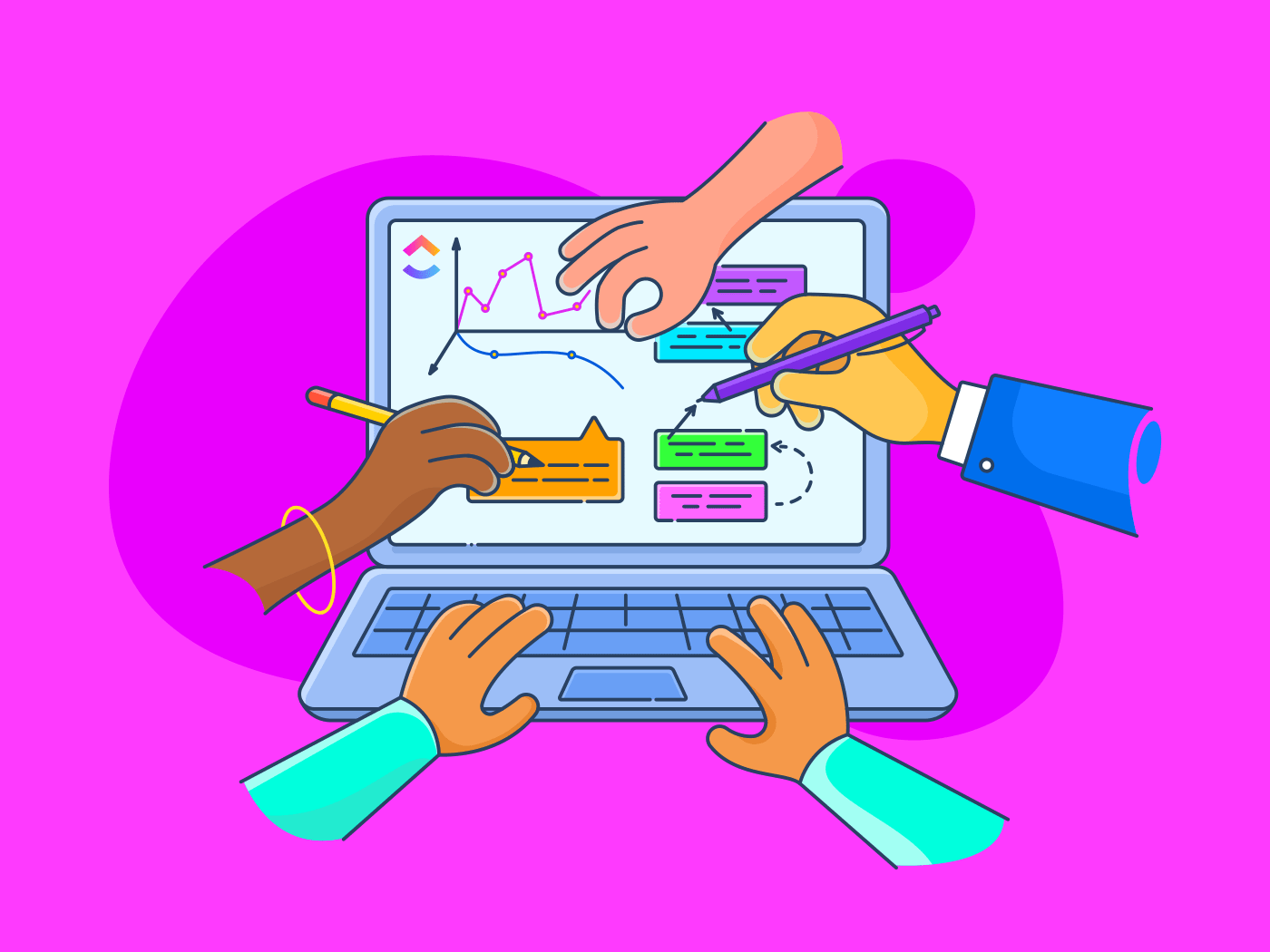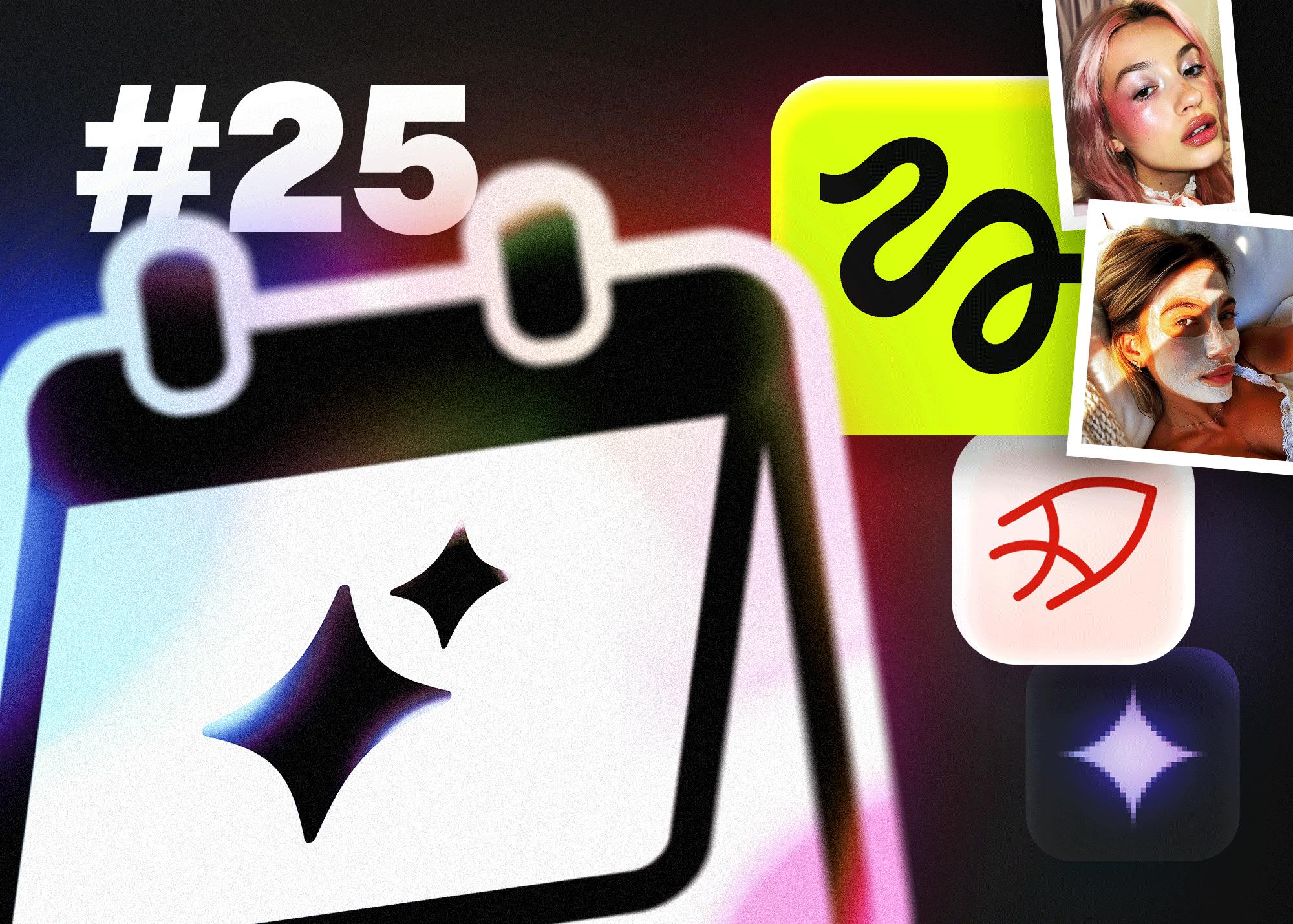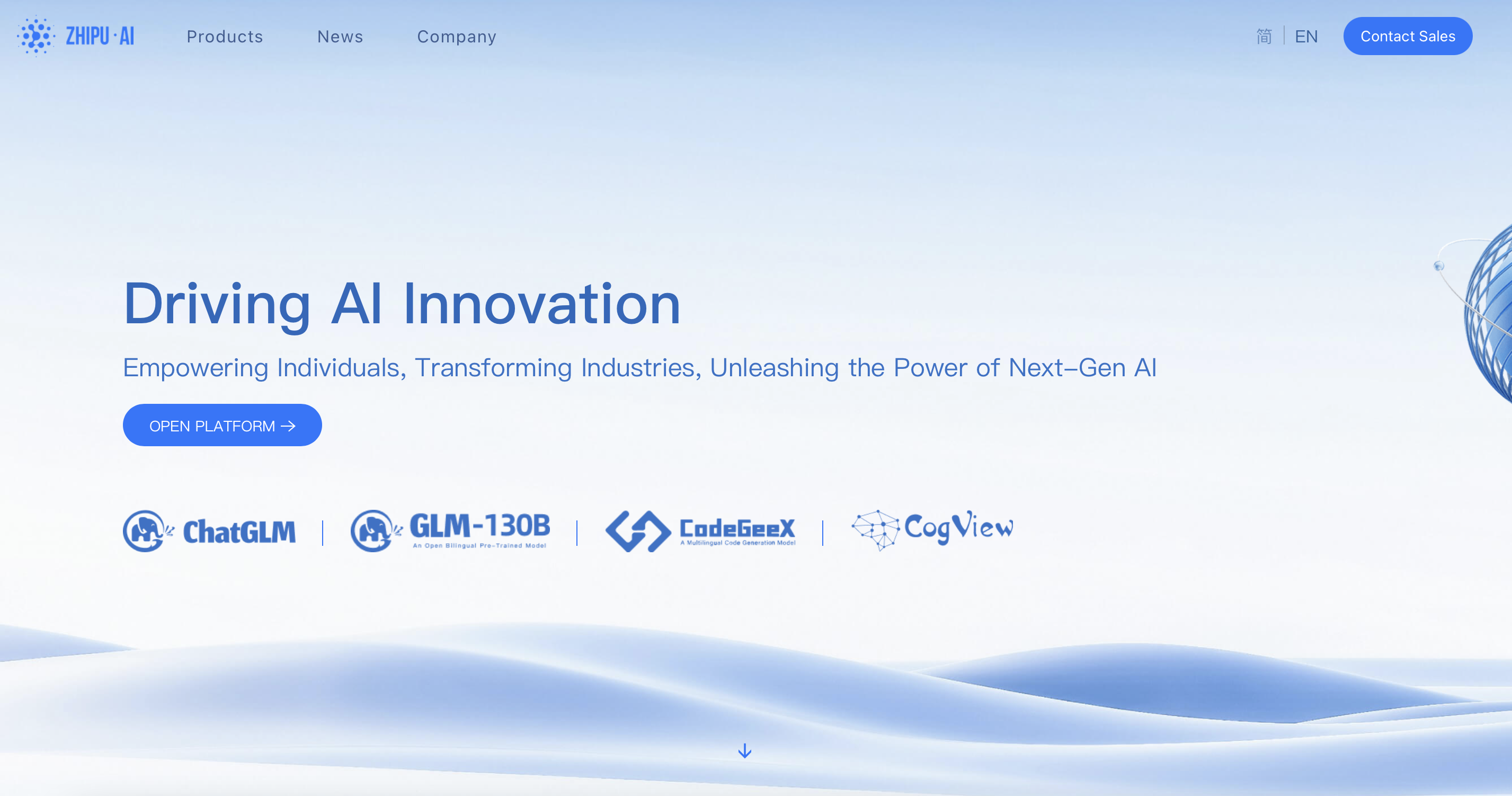Good collaboration is the secret to turning a project from blah to brilliant. And what’s one of the best-known tools for facilitating such collaboration? Whiteboards!
Whiteboarding has evolved beyond simply drawing on a large board with markers. It’s gone digital. Whiteboarding online allows project managers and their teams to visualize ideas, brainstorm concepts, and streamline workflows by providing a shared digital canvas.
This versatile approach encourages creativity, accelerates decision-making, and enhances overall project efficiency.
Whether you’re an experienced whiteboard user or just starting out, this article will show you how to use online whiteboards to improve your team’s approach to problem-solving and innovation.
How to Use Whiteboarding for Collaboration (Tips + Use Cases)
What Is Whiteboarding?
Whiteboarding uses a physical or virtual whiteboard as a collaborative tool for brainstorming, planning, problem-solving, and idea-sharing. It visually represents thoughts, concepts, and workflows on a shared canvas to enhance understanding, encourage creativity, and foster teamwork.
This visual approach to collaboration helps you in several key ways:
- Idea generation: You can brainstorm and quickly capture ideas as they pop into your head
- Problem-solving: Breaking down complex issues into smaller, more manageable pieces makes them easier to tackle
- Visual communication: Sketching out abstract concepts makes them more tangible and easier to understand
- Real-time collaboration: Team members can contribute simultaneously, building on each other’s ideas and creating a truly collaborative environment within an online whiteboard
- Memory aid: The visual nature of whiteboarding helps you remember the key discussion points from the session
Project managers can use whiteboarding to plan and track progress, software developers can create diagrams for system architectures, UX designers can generate user flow maps, and marketers can brainstorm campaign ideas.
The applications are endless, limited only by your team’s creativity and the use of unique whiteboard ideas.
Traditional vs. Digital Whiteboarding
Understanding the differences between traditional vs. digital whiteboarding can help your team choose the most effective approach.
| Traditional whiteboard | Digital whiteboard |
| Tactile and intuitive, requiring no technical skills | Requires knowledge of digital whiteboarding tools |
| Encourages physical movement and face-to-face interaction | Offers infinite canvas space and easy content organization |
| Limited by physical space and the need for in-person presence | Accessible from anywhere, supporting remote and hybrid teams. Enables real-time collaboration across different locations |
| Content is temporary unless photographed or transcribed | You can automatically store content for reference within dedicated tools |
| Difficult to edit or reorganize once written | Allows for easy saving, sharing, and version control of work |
While traditional whiteboards are still great for quick, impromptu discussions, virtual whiteboards break down geographical barriers, boost productivity, and offer features beyond what a physical board can do.
Many digital whiteboard software tools integrate with other productivity tools, creating a simplified workflow. Such virtual whiteboards can include multimedia elements like images, GIFs, and videos, easily duplicate and modify ideas, and even allow you to use brainstorming templates for popular exercises.
How to Use Whiteboarding Effectively
Whiteboarding is a powerful tool for team collaboration and problem-solving, but its effectiveness hinges on how well it is used.
Here are ten unique tips to help you and your team make the most of your whiteboards:
1. Rely on mind maps
Instead of starting with a blank canvas, create a mind map as an initial idea dump. Draw a central image or outline concept in the center of your whiteboard and branch out with related ideas and sub-ideas.
This helps visualize how all the pieces fit together, making sessions more organized and engaging.
2. Play with sticky notes
Sticky notes bring flexibility and visual clarity to whiteboarding sessions. Their movable nature allows teams to organize, prioritize, and rearrange ideas effortlessly, making them ideal for brainstorming, workflows, and mind mapping.
To keep discussions focused, assign each sticky note a single idea, task, or question. Group related notes into clusters to identify themes or connections. For added organization, use different colors or shapes for various categories or concepts.
3. Color code ideas and concepts
Assign specific colors to different categories of ideas or concepts. This visually differentiates ideas, making the whiteboard more understandable and aesthetically pleasing.
For example, during a product brainstorming session:
🟦 Blue sticky notes represent customer pain points (e.g., “Long checkout times”)
🟨 Yellow sticky notes represent potential solutions (e.g., “Introduce a one-click checkout”)
🟩 Green sticky notes represent features to prioritize (e.g., “Add payment method autofill”)
4. Time your whiteboarding session
Set a timer for each brainstorming session to stay focused and prevent discussions from getting sidetracked.
For instance, challenge your team to generate as many ideas as possible for a product launch campaign within 20 minutes.
5. Bring on guest speakers
Invite an expert related to your business to speak to your team. This will spark new ideas and provide valuable insights.
For example, a marketing expert can discuss the latest trends in social media marketing or a sales expert can share tips on closing more enterprise deals despite having a limited number of SDRs on your team.
6. Use multimedia elements
Enhance your whiteboarding sessions by incorporating multimedia elements to enrich discussions and clarify complex ideas.
Include images like product sketches or data charts to provide visual context, embed videos to demonstrate workflows or showcase user feedback, or attach audio snippets of customer interviews to ground discussions in real-world insights. These additions bring abstract ideas to life and provide valuable reference points for everyone involved.
Using multimedia makes whiteboarding more engaging and caters to diverse learning styles.

7. Transcribe meeting audio from your whiteboarding session
Use a real-time transcription tool to record the audio from your whiteboard sessions. This lets you take meeting minutes and note key takeaways.
The tool can also search for specific words or keyphrases, saving time when referencing the discussion.
8. Designate a parking lot area for off-topic ideas
During a brainstorming session, valuable ideas that aren’t directly related to the main topic often emerge. To manage this:
- Designate a specific area of your whiteboard as the ‘parking lot’
- Briefly note down tangential ideas in this area
- Revisit the parking lot at the end of the session or in future meetings
This keeps the main discussion on track while capturing potentially valuable thoughts.
9. Try whiteboard templates
Pre-designed whiteboarding layouts can save you time and provide structure for common meeting types. Consider creating templates for:
- Project kick-offs
- Retrospectives
- Problem-solving sessions
- Strategic planning meetings
Many digital whiteboarding tools offer customizable whiteboard templates. These can help you get right into the content of your meeting without wasting time setting up the whiteboard.
10. Use breakout rooms for focused small groups
Large whiteboarding sessions sometimes have teams struggling with engagement and productivity. You can use breakout rooms to break your one large session into smaller groups for more focused chats:
- Divide the main topic into subtopics for each group
- Give them a time limit for their breakout sessions
- Have each group work on its virtual whiteboard
Then, get back together to share what you learned and combine your ideas. This will allow you to brainstorm more deeply and ensure everyone can share their ideas.
📌 For example, during a content brainstorming session, you could divide the team into smaller groups to focus on specific subtopics:
- Group 1: Brainstorm target audience personas and their pain points
- Group 2: Ideate blog topics or video series themes based on audience needs
- Group 3: Develop distribution strategies for maximizing reach across platforms
Each group works on a virtual whiteboard to organize their thoughts and ideas within the given time. When everyone reconvenes, teams share their findings, which you can synthesize into a cohesive strategy.
Remote Whiteboarding
As workplaces become increasingly distributed, remote whiteboarding has become crucial for maintaining collaborative momentum among team members, even if they are miles apart.
Let’s explore the benefits of remote whiteboarding, the challenges you might face, and some clever ways to overcome these obstacles.
Benefits of remote whiteboarding
Remote whiteboarding overcomes many challenges of physical whiteboarding sessions:
- Get talent from anywhere: You can work with experts from all over the world, so you get different ideas and solutions
- Work when you want: Everyone can contribute to whiteboard sessions in both real time and async, according to their time zones, so projects keep moving forward
- Never lose an idea: Digital whiteboards automatically save progress and allow you to view the version history, so you can always see how ideas have changed over time and go back to old discussions
- Include more people and more ideas: Virtual whiteboards can accommodate more people in a discussion than physical spaces so that everyone can brainstorm together
- Integrate with other tools: Many digital whiteboarding platforms integrate easily with project management and communication tools so you can keep your tasks, docs, assets, etc., in one place
Challenges of remote whiteboarding and how to overcome them
Remote whiteboarding isn’t without its challenges, of course. The most prominent of them are:
- Tech troubles: Technology barriers can sometimes hinder smooth collaboration, but providing adequate training and having a tech support plan in place can help teams overcome these hurdles
- Staying engaged: Maintaining engagement in virtual sessions can be difficult, but utilizing interactive features like polls, timers, and breakout rooms can keep energy and focus high throughout a session
- Missing the in-person touch: Replicating the spontaneity and energy of in-person whiteboarding in a virtual environment is another common challenge. Encourage your team to use digital sticky notes, drawing tools, and emoji reactions to mimic the personal touch of physical collaboration
- Time zone coordination: Scheduling real-time sessions across multiple time zones can be complex. To accommodate everyone, consider a mix of synchronous (live) and asynchronous (at your own pace) whiteboarding activities
- Ensuring equal participation: Some people dominate the conversation in virtual settings. Try structured turn-taking techniques and an anonymous idea submission feature to ensure everyone gets a chance to contribute
Effective remote whiteboarding requires a thoughtful workplace collaboration approach and the right remote whiteboarding tools. By acknowledging and addressing challenges, your team can harness virtual whiteboarding’s full potential to drive innovation and productivity.
Whiteboarding with
Are you seeking integrated solutions for your collaboration needs? Try , a versatile project management and collaboration platform with a digital whiteboarding tool.
Whiteboards provide a dynamic, virtually infinite space for effective visual collaboration with your team.


They bridge the gap between creativity and execution by allowing your team to visualize concepts and turn them into coordinated actions within the platform.
Here are some top features of this tool and how to use it:
- Start with structure: Begin your whiteboarding session by setting up clear sections for different aspects of your project or discussion. This could include areas for goals, challenges, solutions, and action items for an ongoing or planned project
- Leverage visual organization: Use ’s color-coding and grouping features to categorize ideas and create a clear visual hierarchy
- Connect ideas to action: Identify actionable items and transform them into Tasks with assigned owners and due dates as you brainstorm


- Encourage real-time collaboration: Take advantage of ’s real-time editing features by having multiple team members contribute simultaneously during live whiteboarding sessions. You can also follow the discussion along with cursor-tracking
- Keep your eyes happy: Turn on the dark mode to make those all-nighters easier
- Generate AI images: Type an idea, and instantly turns it into a visual with built-in AI


- Work intuitively even on a smaller screen: Use your finger or stylus to sketch and move things around naturally on tablets and mobile
- Integrate multimedia: lets you enhance your whiteboards by incorporating relevant images, Docs, links, and videos. This can provide context, inspiration, or necessary background information for your discussions
- Use templates: Use whiteboard templates from as starting points for your whiteboarding sessions, saving time and ensuring you cover all necessary aspects of your project
- Create a whiteboard library: Save your whiteboards as templates as you complete projects. This allows you to build a library of best practices and successful approaches that can be reused and refined over time
Effective whiteboarding in goes beyond brainstorming—it’s a key part of project planning and management.
Connecting your whiteboard sessions with other features lets you turn your creative thoughts into real tasks. This helps ensure that your team’s great ideas become real results.
Whiteboarding Use Cases
Whiteboarding’s versatility makes it a valuable tool across various professional contexts. Let’s explore specific use cases demonstrating how different teams and industries can leverage whiteboarding to enhance their processes and outcomes.
Whiteboarding and coding
Whiteboarding plays a vital role in software development. It helps software developers plan their code structure, debug complex issues, and refine algorithms.
Here are some of the ways that whiteboarding can help developers:
- Diagram system architectures: Visualizing the structure of a software system helps teams understand how different components interact
- Algorithm design: Complex algorithms can be broken down and illustrated step-by-step on a whiteboard, making it easier to spot potential issues
- Code reviews: Teams can use whiteboarding to walk through code logic, identify bugs, and discuss improvements in a visual, collaborative manner
- Database schema design: Whiteboarding allows quick sketching and iteration of database structures, relationships, and data flows
Using whiteboarding in these ways, development teams can improve their communication, catch potential issues early, and create more robust software solutions.
Whiteboarding in team meetings
Effective team meetings often benefit from whiteboarding’s visual aid and collaborative nature.
Best practices for using whiteboards in different types of meetings include:
- Agenda setting: Start by outlining the meeting’s objectives and agenda on the whiteboard, ensuring everyone is on the same page from the outset
- Idea capture: Use the whiteboard to quickly jot down ideas as they’re shared, creating a visual record of the brainstorming process
- Problem-solving: Break down complex issues into smaller components on the whiteboard, making them more manageable to address
- Action item tracking: As you make decisions, use the whiteboard to list action items, owners, and deadlines
- Visual explanations: Leverage diagrams, flowcharts, or quick sketches to explain concepts more clearly than words alone can convey
Incorporating these practices in your meetings can turn your brainstorming sessions from chaotic to structured, fruitful whiteboarding sessions with clear objectives.
Additionally, if you want your whiteboarding session to reap maximum outcomes, you can use the Scrum Meeting Template.
This template provides a structured whiteboard for planning, visualizing, and tracking sprints, tasks, and goals.
Plus, it offers customizable features to enhance team productivity and project management.
Here’s how this template can help:
- Visualize your sprints to organize tasks, set goals, and understand project timelines
- Consolidate all sprint-related data in one place, ensuring everyone accesses essential details, from meeting notes to product demos
- Improve team communication and collaboration with features like comment reactions and multiple assignees
- Track task progress in real time to identify blockers and resolve them promptly
- Customize task statuses and input fields to adapt the tool to your workflow and track project-specific attributes
- Choose from different view options to cater to various working styles and preferences, giving your team the flexibility to access and interact with information as needed
UX design and whiteboarding
In User Experience (UX) design, whiteboarding is an invaluable tool for creativity, execution, and collaboration.
UX designers frequently use whiteboards to:
- Visualize the steps a user takes when interacting with a product to identify pain points and opportunities for improvement
- Quickly draw different interface layouts for rapid iteration and feedback
- Support collaborative exercises like empathy mapping and ‘How Might We’ sessions
- Map out how to organize and structure content
Whiteboarding is an excellent notion, but managing all the information that comes from these sessions can be troublesome. This is where ’s Design Brief Whiteboard Template can help.
It acts as a bridge between free-form whiteboarding and organized project planning.
With this template, you can:
- Create detailed design briefs that capture all key information
- Clarify the project scope and objectives to avoid misunderstandings
- Ensure there’s no ambiguity by outlining the team’s responsibilities
As projects change and user needs evolve, you need a way to visualize and manage your long-term design strategy. This is where a UX roadmap becomes essential.
’s UX Roadmap Template enables UX designers to map out plans on a timeline, replicate key elements, and seamlessly bring designs to life.
This template can help you:
- Get a clear picture of how your product is progressing over time
- Make sure everyone on your team understands the crucial milestones
- Figure out which ideas to give priority to based on user requirements and business goals
Refine Your Whiteboarding Practices with
Whiteboarding has evolved from static physical boards to dynamic digital spaces that empower teams to work smarter and faster.
Virtual whiteboarding using tools like can simplify teamwork, leading to more creative solutions, better communication, and successful projects. Plus, with ’s collaborative whiteboard templates, you can streamline brainstorming, organize ideas, and turn discussions into actionable plans—all within a single platform.
Don’t take our word for it. Try for your next whiteboarding session!


Everything you need to stay organized and get work done.















